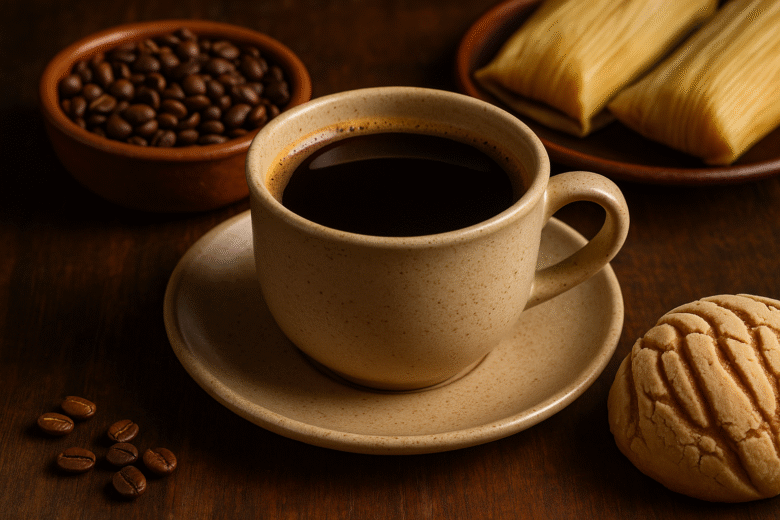Latin America is one of the most important coffee-producing regions in the world, but its relationship with coffee goes far beyond cultivation. In these diverse and culturally rich countries, coffee is a symbol of identity, a social glue, and a daily ritual.
From the highlands of Colombia to the villages of Guatemala, coffee traditions in Latin America reflect history, hospitality, and heritage. Understanding how coffee is consumed and celebrated in this region reveals the deep emotional and cultural ties that connect people to their land and their communities.
Colombia: Coffee Pride and Family Rituals
Colombia is perhaps the most internationally recognized Latin American coffee country. Its mountainous regions provide the perfect climate for growing high-quality Arabica beans.
But beyond the export industry, coffee is a staple of everyday life. The tinto, a small cup of black coffee served sweet, is offered at nearly every home and business.
People drink tinto throughout the day, often from thermoses or street vendors, and it’s common to be offered a tinto as a gesture of welcome.
In rural areas, many families roast, grind, and brew their own beans—connecting them to the land and to generations of tradition.
Brazil: Cafézinho and Casual Generosity
Brazil is the largest coffee producer in the world, and coffee is deeply woven into the fabric of daily life.
The cafézinho, a small, strong, sweetened black coffee, is served everywhere—from homes and offices to hair salons and street corners.
It’s more than a drink; it’s a sign of hospitality. Refusing a cafézinho may be considered rude in many social settings.
Coffee in Brazil is often simple, yet full of meaning. It’s brewed using cloth filters, served hot, and offered frequently throughout the day.
At home, many families keep a pot on the stove, ready to serve to visitors at a moment’s notice.
Mexico: Coffee with Cinnamon and Sweet Bread
In Mexico, coffee is often brewed with spices. Café de olla, a traditional preparation made in a clay pot with cinnamon, piloncillo (raw cane sugar), and sometimes cloves, is especially popular in the countryside.
The result is aromatic, slightly sweet, and warming—perfect for sharing during early mornings or family gatherings.
Coffee is commonly enjoyed with pan dulce (sweet bread), making it a central part of breakfast and afternoon merienda.
While large chains have grown in urban areas, traditional cafés remain strong, offering a mix of old and new in Mexican coffee culture.
Peru: Altitude and Ancestral Methods
In Peru, coffee is grown in high-altitude regions where farming methods are often organic and passed down through generations.
Coffee is typically brewed using a chorreador or simple drip methods. It’s not unusual to find small cafés or street vendors selling strong black coffee served with condensed milk or panela.
In some areas, coffee is part of ceremonial life. It is shared during religious festivals, agricultural celebrations, and family milestones.
Coffee also plays a role in cooperative movements, with indigenous farmers working together to preserve traditional methods and improve economic conditions.
Guatemala: Flavor and Ceremony
Guatemala’s volcanic soil and varied microclimates produce rich, complex coffees. Coffee drinking here is tied to both personal ritual and social connection.
A typical cup is brewed strong and served black, often accompanied by tortillas or sweet tamales.
In indigenous communities, coffee is sometimes linked to spiritual practices and seasonal cycles.
Many families roast beans at home using comals (griddles) and brew them in pots, passing techniques through generations.
Coffee also plays a role in social justice, as cooperatives support fair trade, education, and women-led businesses.
Cuba: Bold Flavors and Fast Rituals
Cuban coffee is famous for its intensity and speed. A typical cafecito is brewed using a stovetop moka pot, with sugar whipped into the first drops to create a frothy layer known as espuma.
The resulting drink is bold, sweet, and served in tiny cups. It’s common to drink it in one or two sips—quick and powerful.
Cuban coffee culture is about community. Neighbors pass cups over fences, and cafés serve drinks through windows to people on the street.
Coffee here is less about quantity and more about quality and rhythm.
Honduras: Growing Consumption and Rural Rituals
While Honduras has long been a major coffee producer, domestic consumption has grown in recent years.
Coffee is brewed in simple pots or drip methods and served to guests at any time of day.
In rural areas, it’s not uncommon for coffee to be served alongside homemade pastries or fried plantains.
Many families roast their own beans, contributing to a strong sense of pride and tradition.
Efforts to improve coffee education and café culture are expanding in cities, bringing new life to old customs.
El Salvador: Simple Joy and Artisanal Growth
Coffee in El Salvador is often enjoyed as part of slow mornings and family breakfasts.
While instant coffee remains popular, there’s a growing artisan movement in urban areas focused on specialty brews and manual methods.
Baristas are experimenting with pour-overs, cold brew, and single-origin expressions that highlight the country’s unique terroir.
In the countryside, coffee drinking remains tied to hospitality. A fresh cup is an act of kindness, and it’s always offered to guests.
Cafés and cooperatives are helping revive interest in Salvadoran coffee as both an export and a local treasure.
Dominican Republic: Coffee with Milk and Meaning
In the Dominican Republic, café con leche is a morning staple, especially in urban homes.
It’s typically made with strong espresso-like coffee and hot milk, sweetened and served with bread or fried plantains.
Street vendors sell small cups to morning commuters, while older generations still brew using cloth filters or aluminum pots.
Coffee is associated with family and tradition. It’s often consumed in long conversations, shared between parents, grandparents, and children.
Shared Values Across Latin America
Despite regional differences, some values are consistent throughout Latin American coffee culture.
Hospitality is at the heart of it. Offering coffee is a way to say “you are welcome here.”
The act of brewing and serving is often slow and deliberate, reinforcing a pace of life that values connection over convenience.
Coffee is also a marker of pride. Whether it’s grown in backyard plots or exported to global markets, it represents heritage and resilience.
Coffee as Resistance and Identity
In many Latin American countries, coffee is tied to social movements. Farmers have fought for land rights, better pay, and fair trade conditions.
Coffee cooperatives serve not only economic purposes but also political and cultural ones—preserving indigenous languages, supporting women, and building education.
Drinking locally grown coffee becomes an act of support and empowerment, connecting people to larger stories of justice and independence.
Conclusion: A Cultural Legacy in Every Cup
Coffee traditions in Latin America are rich, varied, and deeply personal. They are not driven by trends, but by legacy.
Each cup holds the taste of soil, family, memory, and history. It’s not just a drink—it’s a story passed from generation to generation.
To truly understand Latin American coffee is to appreciate the lives behind the beans.
It’s to see coffee as an expression of culture, identity, and love.

Marcio Luzardo is a coffee enthusiast and the voice behind Tudo Viraliza. With a passion for turning curiosity into practical knowledge, he shares easy-to-follow tips, guides, and insights to help readers enjoy better coffee every day. When he’s not writing, Marcio is exploring new brewing methods or diving into the rich stories that connect coffee to culture, lifestyle, and wellness.


